Since Penang is such a tropical island that makes you sweat as soon as you step out of the hotel, my mom suggested to eat lunch at “an air-conditioned restaurant”. And Chee Seng hesitated, reasoning that good food and air conditioning don’t mix in Penang. We later experienced this ourselves, and found an inverse relationship between the number of walls surrounding the meal and the satisfaction we had from eating it. Under the guidance of our Penang native and his particularity about food, we had a fantastic experience.
Let’s eat!
Here’s a good roti place where the family had our first dinner and where Aunt Marian fell in love with the key lime iced tea. This is a corner restaurant with two walls:
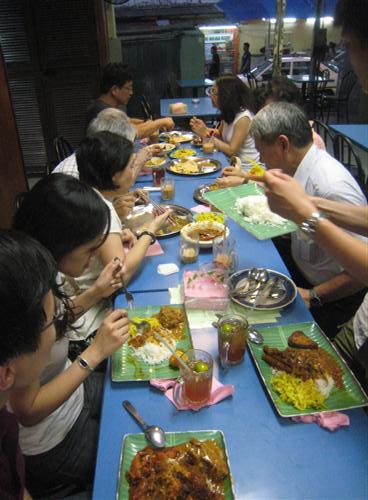
Breakfast at the hotel – since Malaysia has a lot of Muslims, public food places are usually Halal. In this picture are chicken bacon and chicken sausage:
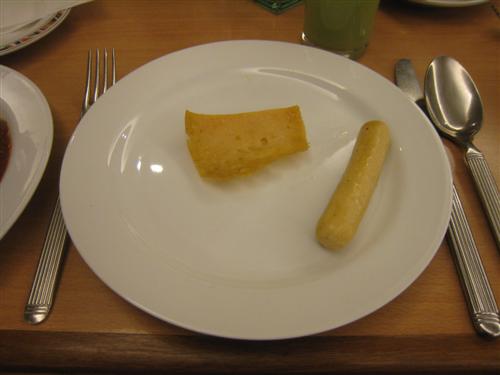
Sambal, curries, anchovies, egg, etc. Common breakfast food (plus coconut rice) in Malaysia that I’ve been hearing about:

Coconut experience #1 at a tourist spot. Supposedly not that great in either coconut quality or the vendor’s opening skills. Some of the juice was spilled during the process and it got sticky.

One of the most recommended bal kuh teh places in Penang. That and curried fish head:
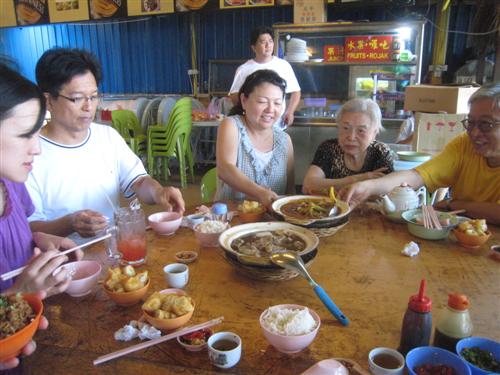
The most spicy vindaloo I’ve had, by faaaaaar. And other northern Indian dishes:
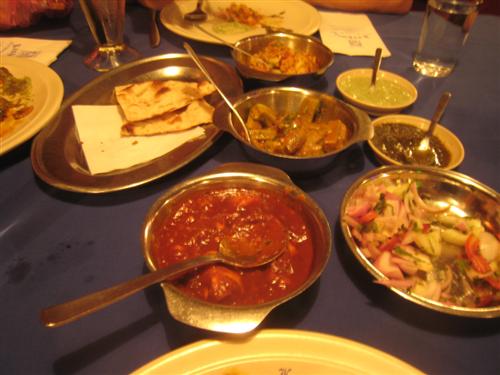
Coconut experience #2, by the beach, while waiting for the bride and her mom to get prettified at the salon. These were better coconuts and the vendor cut them open more skillfully too.

Rojak, the Penang specialty of shrimp sauce and fresh fruits. Can’t say I was a fan of it. Chee Seng had a good laugh watching me eat this thing.

Coconut experience #3, the best pandang coconut vendor in town. The pandang (sp?) coconut is a generically modified plant that’s sweeter than regular coconuts, and is supposedly hard to find. You wouldn’t think that coconut quality varies by vendor, by somehow it does:
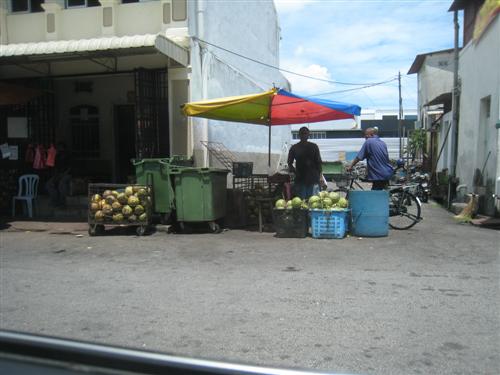
In two slashes with the knife, the vendor shaves off parts of the coconut’s exterior and turns it into something very easy to hold in one hand. Then the third slash opens up a hole precisely big enough for the straw. I wouldn’t mess with this guy 😉
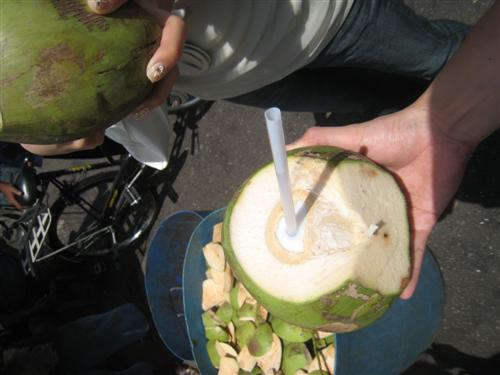
After you drink the juice, hand the shell back to the vendor and with the same knife, he (1) sculpts off a piece of the shell into a scraper, and (2) cuts the shell in half. Now you can eat the inside with the scraper! What could be more eco-friendly than having a single thing serve as a drink, a snack, a bowl and a spoon?
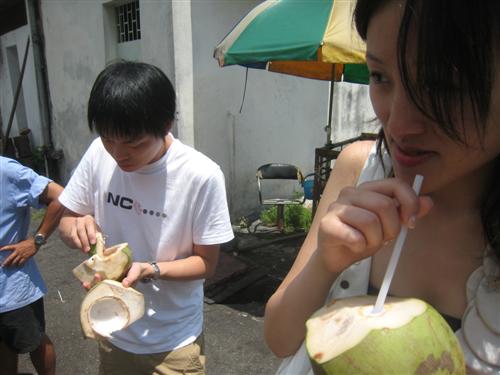
Next, onto the best char guay teow in Penang. This lady is supposedly so amazing, that people would come across town despite her obnoxiousness, and wait for a whole hour just to eat a small plate of her stir-fried noodles:
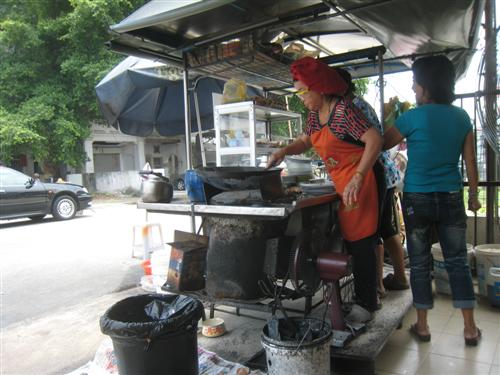
Snacks we had while waiting for an hour for the char guay teow: mee goreng (sp?), spring-roll like thingy, and the “brain brain” fish paste that looked like poop. All these came from different hawker stalls (street food carts), and the char guay teow lady didn’t care that we ate them in her seating area:
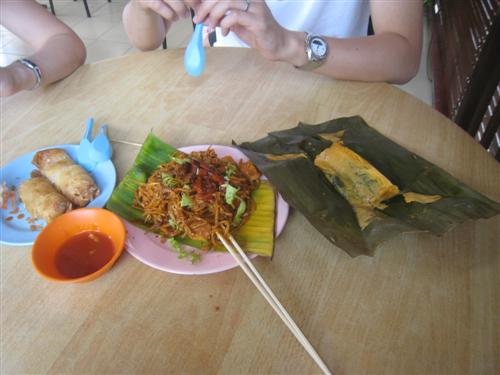
The newlyweds and their drinks – watermelon juice and tang shui.
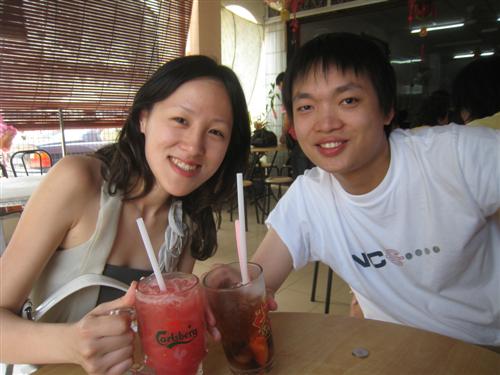
Finally! The well-famed char guay teow! It doesn’t look any different from the chow mien from your local Panda Express, but the explosion of flavors is simply unexplanable! You might think I’m exaggerating, but after this plate I actually felt sad about leaving Penang…
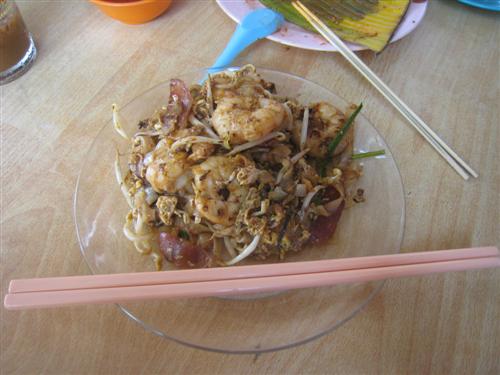
Afternoon snack was provided by these people frying curry puffs and bananas (the oil is more black than the stuff you pump into your car, though):
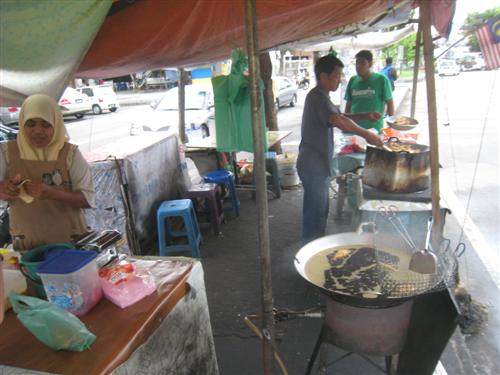
Another roti vendor:
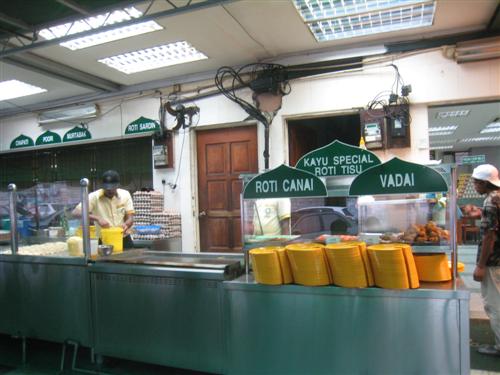
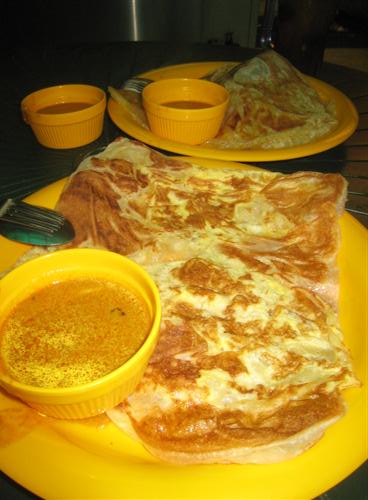
When you look hard enough at a street food vendor, you’ll find (at minimum) unsightly sanitary issues. For example, what I saw about the char guay teow lady’s assistant – well, I’ll spare you with the details here. But instead of thinking poorly of street food, this only makes me wonder how much nasty stuff is hidden from us in restaurant kitchens. It’s great being able to see the chef, the ingredients, and even the source of heating. Chee Seng says that in Penang, words travel like wildfire and good/bad incidents about each stall is quickly known by everybody, sort of like an old school version of CitySearch. I wonder if that or the state department of health is a more effective way to control quality.
Goodbye Pulau Pinang and your good foods. The only question is now, how will I be able to go back to eat at Penang the restaurant chain?